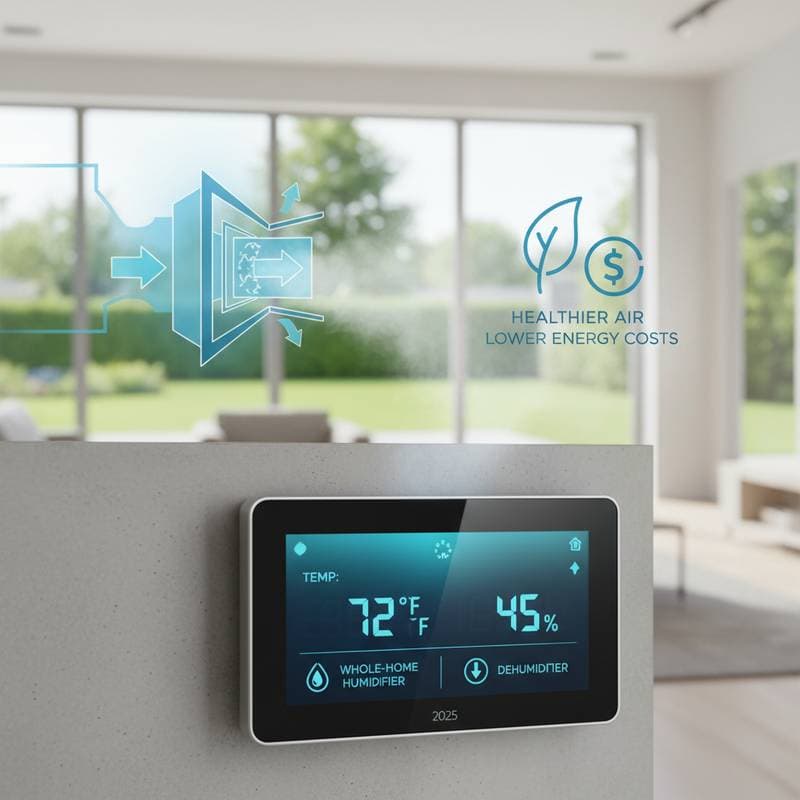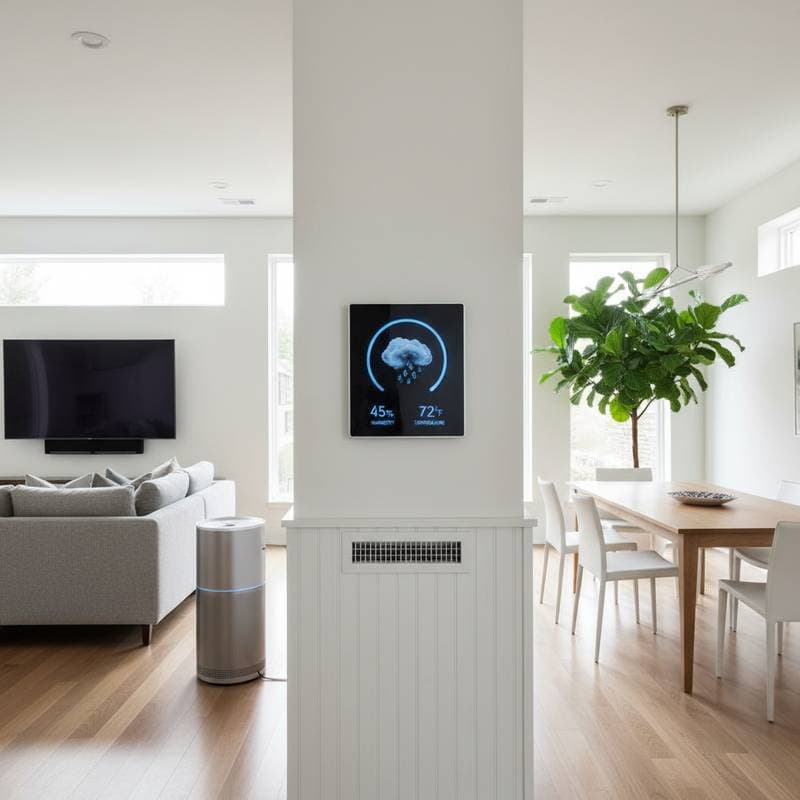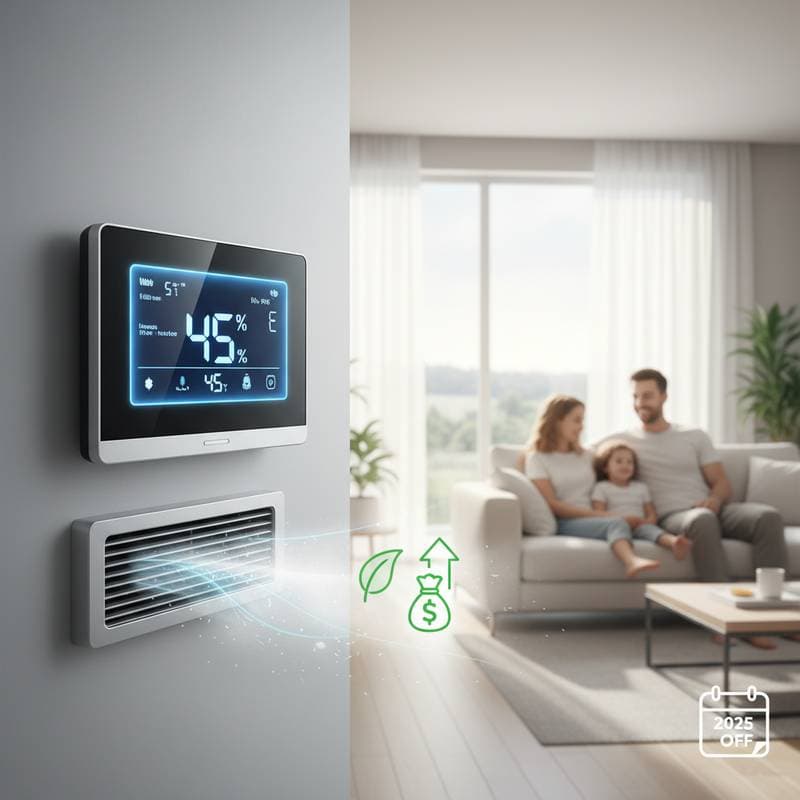2025 Humidity Control: A Transformative Advancement in HVAC Technology
As an HVAC professional, I have observed numerous homeowners grappling with a common challenge. The thermostat indicates an ideal temperature, yet the air feels oppressively humid, uncomfortably sticky, or excessively dry. Adjustments to the temperature provide temporary relief, but true comfort remains elusive. Temperature regulation represents only one aspect of indoor climate control; effective humidity management holds the key to sustained year-round comfort, and recent HVAC developments are revolutionizing this process.
Residents in areas prone to humid summers or arid winters often experience how moisture levels influence both personal comfort and household energy consumption. Advanced whole-home systems now offer precise moisture balancing, positioning 2025 as a pivotal year for integrating humidity control into standard HVAC practices.
The Overlooked Consequences of Inadequate Humidity Regulation
Homeowners frequently prioritize heating and cooling efficiency while neglecting the long-term impacts of unbalanced humidity. Consider the following outcomes when moisture levels deviate from optimal ranges:
- Excessive Humidity: This condition fosters the growth of mold, mildew, and dust mites, while placing additional strain on air conditioning units as they attempt to dehumidify during cooling cycles.
- Insufficient Humidity: Low moisture levels lead to contraction in wooden flooring, separation in trim work, and physical discomfort such as dry nasal passages or chapped skin.
- Variable Humidity: Inconsistent levels accelerate deterioration of structural materials and undermine stable indoor air quality.
In my experience, I have entered residences where air conditioning systems required early replacement due to moisture-related complications misdiagnosed as equipment defects. Unaddressed humidity issues compel HVAC systems to operate under excessive load, potentially shortening their operational life by several years.
Practical Strategies for Optimizing Home Humidity Levels
Achieving ideal humidity extends beyond equipment selection; it involves consistent habits and targeted seasonal modifications to support system performance. The following recommendations assist homeowners in maintaining balanced indoor air:
-
Enhance Sealing and Insulation: Inspect and seal gaps around windows, doors, and duct connections to prevent humid outdoor air from entering. These measures minimize moisture fluctuations and boost overall energy efficiency by up to 20 percent in vulnerable areas.
-
Improve Ventilation in Moisture-Prone Zones: Install and utilize exhaust fans in kitchens, bathrooms, and laundry rooms. Operate them for at least 20 minutes after activities like cooking or showering to expel steam and prevent localized humidity buildup.
-
Inspect and Replace Filters Regularly: Examine air filters every month and replace them as needed. Restricted airflow from dirty filters impairs the system's ability to regulate humidity, leading to uneven moisture distribution.
-
Arrange Professional Maintenance Annually: Engage a certified technician for a comprehensive inspection, including cleaning of evaporator coils, drain lines, and humidity sensors. This preventive approach resolves up to 80 percent of potential humidity control issues before they escalate.
-
Employ a Hygrometer for Ongoing Monitoring: Affordable digital hygrometers provide accurate, real-time humidity readings. Aim for levels between 40 and 50 percent; use the data to inform adjustments in ventilation or system settings.
-
Consider Plant Placement and Housekeeping: Incorporate humidity-absorbing plants like peace lilies in high-moisture areas, and maintain diligent cleaning to reduce dust that can exacerbate dryness or dampness.
Tangible Benefits of Effective Humidity Management
Implementing precise humidity control yields noticeable improvements in daily living. One client in a coastal region dealt with chronic dampness that affected their entire home. Following the addition of a whole-home dehumidifier and crawl space encapsulation, their air conditioner operated 30 percent less frequently. Indoor air quality improved dramatically, preventing further damage to furnishings and reducing monthly utility costs by an average of 15 percent.
In contrast, a family enduring dry conditions during extended heating periods benefited from a whole-home steam humidifier. This solution eliminated persistent static electricity and respiratory irritation, while safeguarding delicate hardwood surfaces from cracking. The result was an environment of steady, invigorating warmth that portable devices could not replicate, fostering what the homeowners called a sanctuary of effortless well-being.
HVAC technician Rachel Moore emphasizes, "Humidity control is no longer a luxury add-on. It is part of building a healthy, efficient home." This perspective aligns with the outcomes I witness regularly, as balanced air enhances not only physical comfort but also the longevity and performance of HVAC investments.
Frequently Asked Questions
Q: How can I determine if my home requires a dehumidifier or humidifier?
A: Signs of excess moisture include window condensation, musty smells, or clammy sensations, indicating a need for a dehumidifier. Indicators of low humidity encompass dry skin, static buildup, or splitting woodwork, suggesting a humidifier. Use a hygrometer to measure: readings above 55 percent point to high humidity, while below 35 percent signals dryness.
Q: What is the typical duration for professional installation of humidity control systems?
A: Standard whole-home units install in four to six hours. Complex configurations involving custom ductwork may extend to eight hours, but most projects conclude within one day to minimize disruption.
Q: Is a portable humidity device sufficient as an alternative to a whole-home system?
A: Portable options suit small areas like single rooms but demand regular emptying and repositioning, lacking the automation of integrated setups. Whole-home systems deliver uniform control throughout the residence, syncing seamlessly with central HVAC for reliable, hands-free operation.
Q: How does humidity control impact energy efficiency?
A: Balanced humidity allows HVAC systems to reach set points faster, reducing runtime by 10 to 30 percent. This efficiency lowers bills and prevents overworking components, extending system life.



